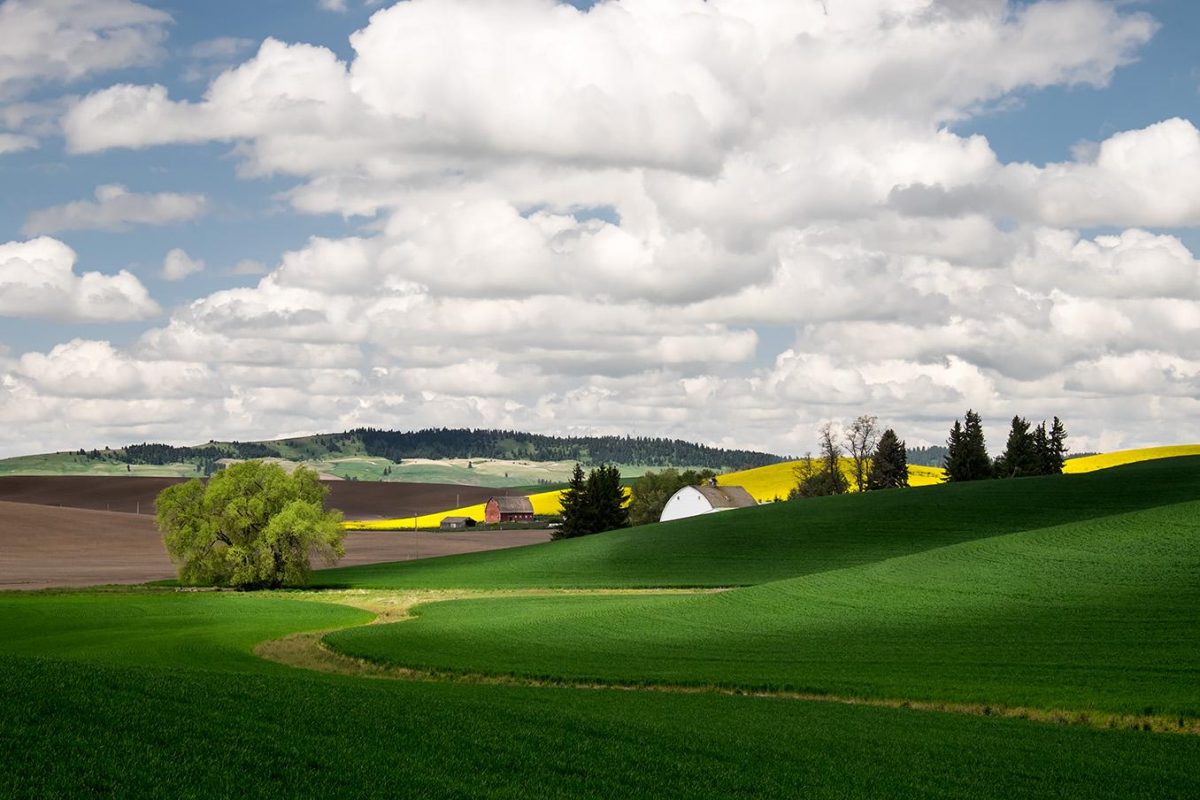It’s hard to explain rationally, but there are some locations for me where the light is just different – with a special quality unique to that area. One place that qualifies is Cape Cod, whose light is described in photos and words in Joel Meyerowitz’s ground-breaking book Cape Light. Another area I’d definitely nominate for the extraordinary quality of its light is the Palouse, an approximately 4,000 square mile area in Northeast Idaho and Southwest Washington, about 30 minutes south of Spokane.

I’ve been to the Palouse many times and feel that it’s one of the most unique and beautiful areas to photograph in the United States. If you’ve never been, it should definitely be on your photography bucket list. Often called “our Tuscany,” it’s where much of our nation’s wheat is grown, along with barley, canola and other grains.

While the Palouse attracts photographers from all over the world, the real artists there are the farmers, though they may not realize it. As they cultivate the land, they carve sensuous patterns in the rolling asymmetrical countryside for us crazy photographers to shoot! And the colors and shapes are constantly changing as crops grow in, are harvested, new crops are planted and the seasons change. Fields of wheat that are a brilliant green in the spring and summer turn golden in the Fall and move gracefully in the wind. You will be stunned the first time you round a corner to see acre after acre of brilliant yellow canola.

While there are several iconic locations, including dilapidated barns, abandoned houses and old, rusting vehicles, the greatest way to discover the Palouse is to just drive around and explore the back roads. You never know what you’ll run across. One location that seems bland at one time of year can be spectacular a month later.

One “must” location is Steptoe Butte, where you get spectacular vistas of the undulating patterns of this amazing countryside. Make sure you visit, at the very least, at both sunrise and sunset. For me, each trip to Steptoe brings a new and different quality of light.

And if you’re lucky, you’ll even be rewarded with a rainbow (above) or unusually dramatic light (below).

Along with the farmers, the other primary artist of the Palouse is Mother Nature, if you’re lucky creating some of the most dramatic skies and cloud formations you’ve ever seen.

When I’m in the Palouse, the one filter that stays on my camera almost all the time is the Singh-Ray warming polarizer. Whether it’s to pop the puffy white clouds against the dark blue sky or to knock down haze or remove glare from an old truck, it is the one essential filter for the Palouse.

It is important to remember that a polarizer is not an on-off switch. It does not always need to be rotated to achieve its fullest effect; it can be rotated to taste. This is especially important when shooting on the wide side with skies. Over-polarization can make the natural variation of the blue become uneven and obviously polarized, which you don’t want. In this case, it would be wise to back off on the amount of polarization. In fact, there are times where I will shoot a fully polarized frame for the land and an un-polarized or slightly polarized frame for the sky. I will then blend the two in Photoshop.
Another essential filter for the Palouse is the Vari-N-Duo or a 5-stop Mor-Slo filter together with a polarizer, for capturing dramatic motion pans of the colorful fields, especially from high up on Steptoe Butte.

The Palouse is worth a visit at almost any time of year, but summer and Fall are the most popular times for photography. I can almost guarantee you won’t be disappointed!


